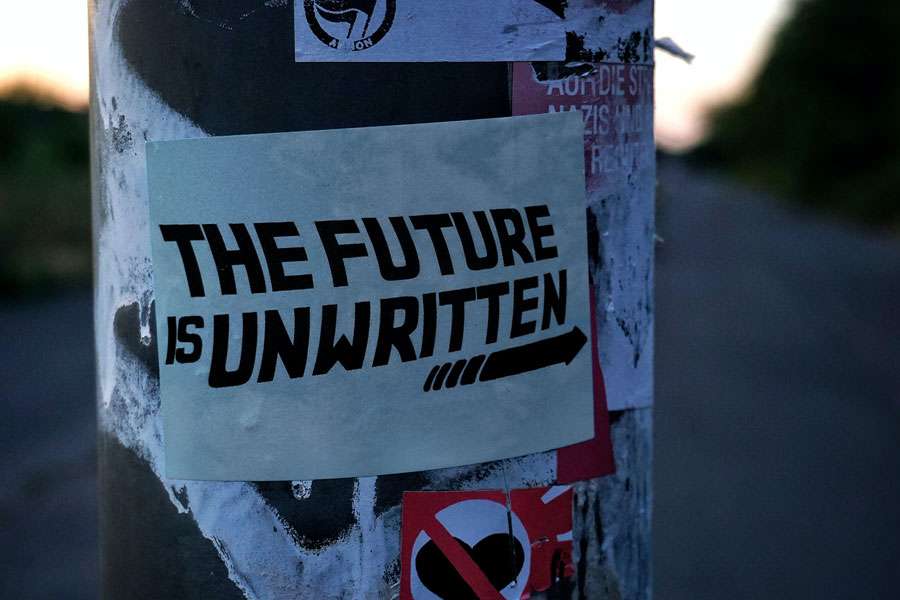Between ages 5 and 14, I was asked 1,278 times what I wanted to be when I grew up.
My stock answer was “a veterinarian, because I love animals.”
Never mind (as I’d later discover) that I’m haunted by anatomical byproducts; that I love intellectual (human) debate more than furry comfort; that I prefer a blazer to a lab coat.
Few of us grow up to become that thing. And many of us will be many things in time.
And it’s because defining the thing requires time to discover; to explore and experiment; to make bad decisions followed by better ones.
Similarly, the Future of Work (FOW) will likely be many things for us over time…and it too requires discovery, experimentation, and space for bad choices to inform better ones.
As we’re working with leadership teams to define their FOW, we’re using a simple framework to take them through such discovery. And today I share it with you.
1. Define an experience (not a policy manual)
So many companies are leading with policy. We’re on a mission to shift that focus to experience.
Rather than asking who may be remote, how one’s day must be structured, and how meetings are to be run, we’re challenging leaders instead to ask themselves what experience they want team members to have.
For some, the focus is on community and collaboration. For others it’s efficiency and fast experimentation. There is no one right experience to deliver – but that act of defining that experience with intention will shape the choices you make regarding your FOW.
So, begin here with your executive leadership team. Take them through a visioning exercise, allowing them to rally around an ideal experience they want to own.
Need support in structuring or running this session? Give us a shout.
2. Provide flexible guardrails (not rules) that align to that experience
Hard-and-fast rules just aren’t the thing right now. These past nearly-two years have put our collective resilience on display. We’ve demonstrated an ability to do hard things. Our ingenuity has been empowering. So let’s not strip it away.
Wherever possible, lean away from rules and mandates, and instead, offer guidelines that inform individual choices.
So for example…
| Instead of…RULES | Try…GUIDELINES | |
| In-office Tuesdays are mandatory! | → | We strive to be physically together when creativity and imagination are called for |
| Monthly Zoom happy hours…woohoo! | → | Make time in your day for fun…as you define fun |
| Working hours are X – Y | → | Outcomes must be delivered seamlessely |
If the nature of your work does require a hard rule or two, do what you gotta do. But where you can offer flexibility, it’s part of your Employee Value Proposition. So don’t squander the chance to delight your employees.
Let your guardrails inform choices.
3. Invite experimentation (don’t over-rely on “research”)
You’ve defined an experience and offered some guardrails. Now it’s time to begin defining actual practices to bring it all to life.
So what’s the best way to do X? The truth is, I don’t know. Nobody does…yet. But let’s have some fun and freedom in figuring it out.
Empower people, truly, to try things and discover what works.
Invite leaders and teams to be scrappy and imaginative Let them reinvent the water cooler, the board room, the team building. We’ve added so many tools to our ways-of-working toolboxes – let’s put them all on display!
Some practices I’ve seen teams create through experimentation?
- Hybrid-hangs: Designated times during which all team members (in-office and remote) are invited to join a virtual hang-out space. No agenda or objectives – just coming together, even if working independently.
- Monthly “happy” hour: Nope – no mandatory cocktails here. It’s literally an hour each month when everyone hits pause on work and does something to personally recharge – take a yoga class or a nap; read a book; grab coffee with a friend. Remember – energy matters.
- Quarterly on-sites: While in-office Tuesday/Thursday can feel heavy-handed and purposeless…quarterly on-sites are less frequent and more intentional. It’s a full day – in-person where possible – designed for team building or idea-generating or collaborative learning – whatever your team needs most.
4. Codify insights as you go (don’t strive to figure it all out now)
As teams begin experimenting with new and creative ways of working, some will be wins and others not so much.
But have a means of collecting the practices that rise to the top, and share them across your organization. Not as mandates – just as food for thought.
We believe our approach truly begins to democratize the FOW; and that collective insights and experiments deliver better outcomes than executive mandates every time.
We can help you make that FOW a reality. Reach out anytime.
